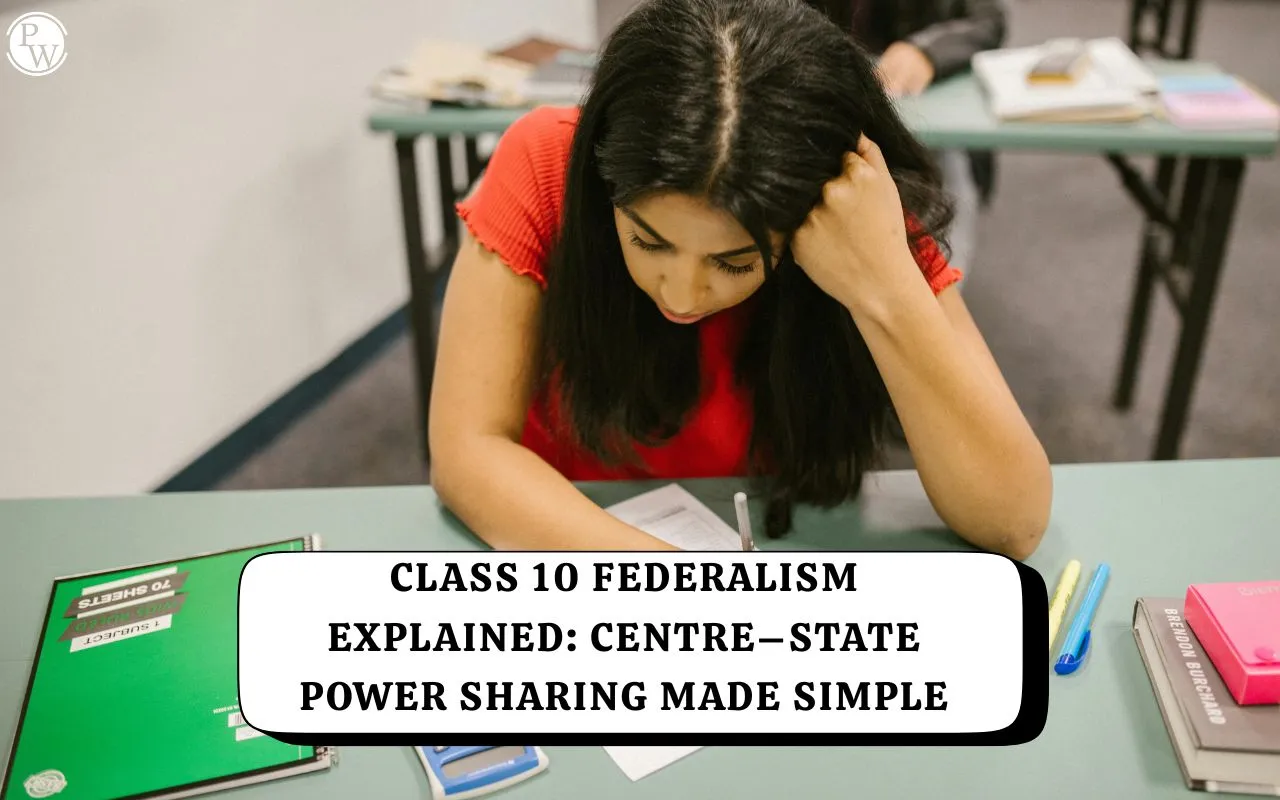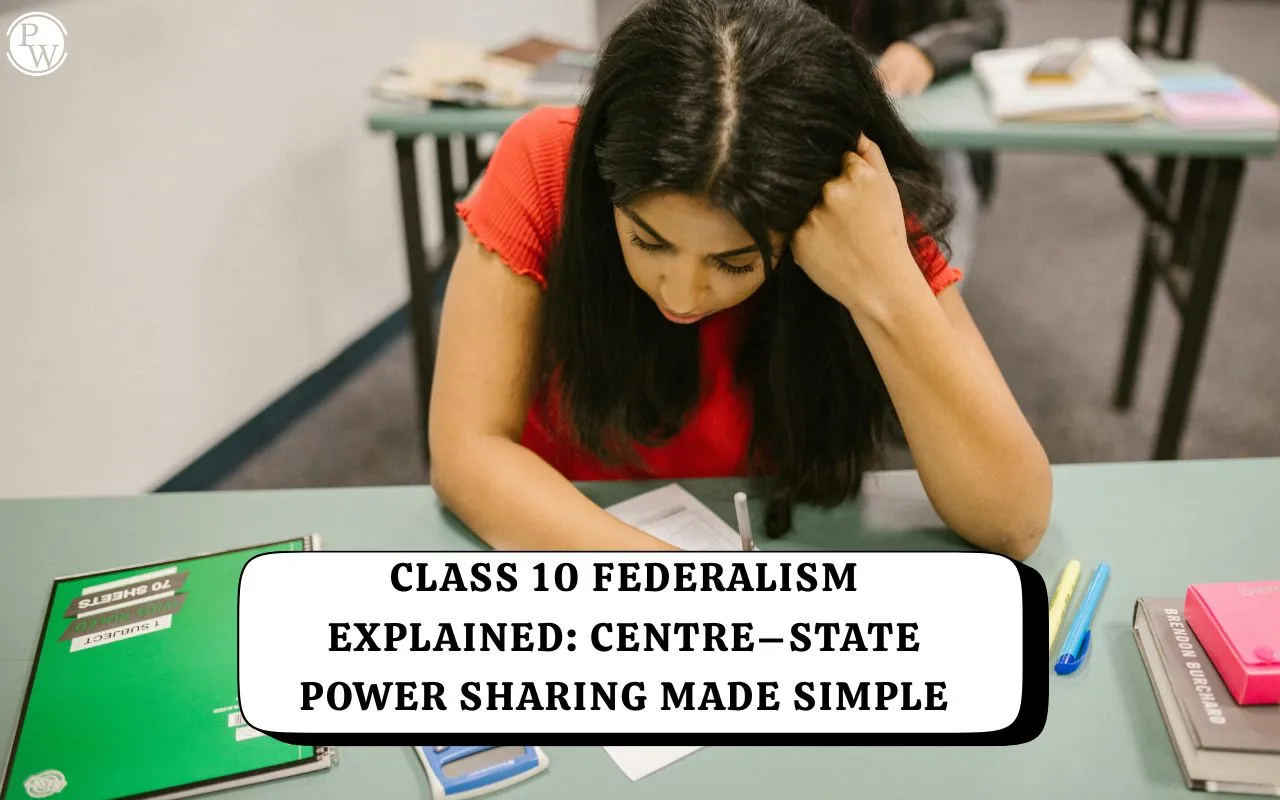

The relationship between the Centre and the States in India rests on a clear rule: whenever the central government issues a directive, the States must follow it. Bringing all States into the Union of India was a difficult task, but the Constitution later declared India a “Union of States.” States were not created only on linguistic lines; some were formed on cultural, ethnic, or geographical grounds. The Constitution also made regular elections compulsory.
In the previous chapter, the focus was on the importance of power sharing. This chapter takes up one particular form of power sharing—the vertical division of power, known as federalism. This is part of the NCERT line-by-line series, covering the entire chapter from start to finish.
To understand federalism easily, a real-life example helps. In school, the principal heads the entire institution, with full authority over it. Below the principal are class teachers who manage specific classrooms, and further below are class monitors or house representatives who hold limited powers. In the same way, governmental power is divided at different levels.
At the top is the Prime Minister, under whom the entire country functions as the central government. Each State has a Chief Minister responsible only for that particular State—like the Chief Minister of Uttar Pradesh handling matters within UP. Within States, there are even smaller units like Panchayats, Zila Parishads, municipalities, and municipal corporations. Power is thus divided across multiple levels. This, in simple terms, is federalism: the division of governmental power across different levels.
What the Chapter Covers
This chapter explains:
-
What federalism means.
-
Key features of a federal country.
-
Types of federations.
-
Why India is considered a federal country.
-
How federalism works in practice.
-
The concept of decentralisation.
Federalism Through an Example: Belgium and Sri Lanka
Belgium eventually became a federal country, while Sri Lanka still follows a unitary system. A federal system divides power between at least two levels of government. A unitary system does not divide power; all authority lies with the central government. If States receive any power in a unitary system, it remains subordinate to the Centre and can be withdrawn.
In a federal system, each level of government has its own area of authority. In a unitary system like Sri Lanka, the central government retains all major powers, and Tamil leaders want the system to shift towards federalism so that power can be shared at regional levels.
In Belgium, the 1993 constitutional changes reduced the central government’s powers and granted constitutional authority to regional governments. Earlier, these powers could be taken back by the Centre, but after 1993, they became independent. Sri Lanka, however, continues with a unitary system where the national government holds all power.
Meaning of Federalism
Several countries—such as Canada, the USA, Brazil, Argentina, Russia, India, Pakistan, Australia, South Africa, and Nigeria—are marked as federal on world maps.
Federalism is a system of government in which power is divided between a central authority and the constituent units of a country, such as States. There must be at least two levels of government, and both levels must function independently within their respective areas.
In federal systems, the Centre has its own powers and the States have their own. Neither interferes in the other’s jurisdiction. In India, power exists at the central level, state level, and local level.
Key Features of Federalism
1. At least two levels of government
A federal country must have a minimum of two levels—such as Centre and States. Local governments may or may not exist everywhere, but two levels are essential.
2. Different levels govern the same citizens, but in separate matters
For example, people in Uttar Pradesh are governed by both the State government (headed by the Chief Minister) and the Central government (headed by the Prime Minister). Each level governs different aspects of their lives.
Matters like defence, foreign affairs, currency, and banking come under the Centre.
Police, trade, and other State matters come under the State government.
3. Jurisdictions are clearly written in the Constitution
The Constitution specifies which subjects belong to the Centre and which belong to the States. All authority of both levels flows from the Constitution.
4. No level can unilaterally change fundamental provisions
Neither the Centre nor a State can alone change the basic power-sharing structure. Any amendment needs the consent of both levels.
5. Courts interpret the Constitution
Courts, especially the Supreme Court, interpret constitutional provisions and decide disputes between different levels of government.
